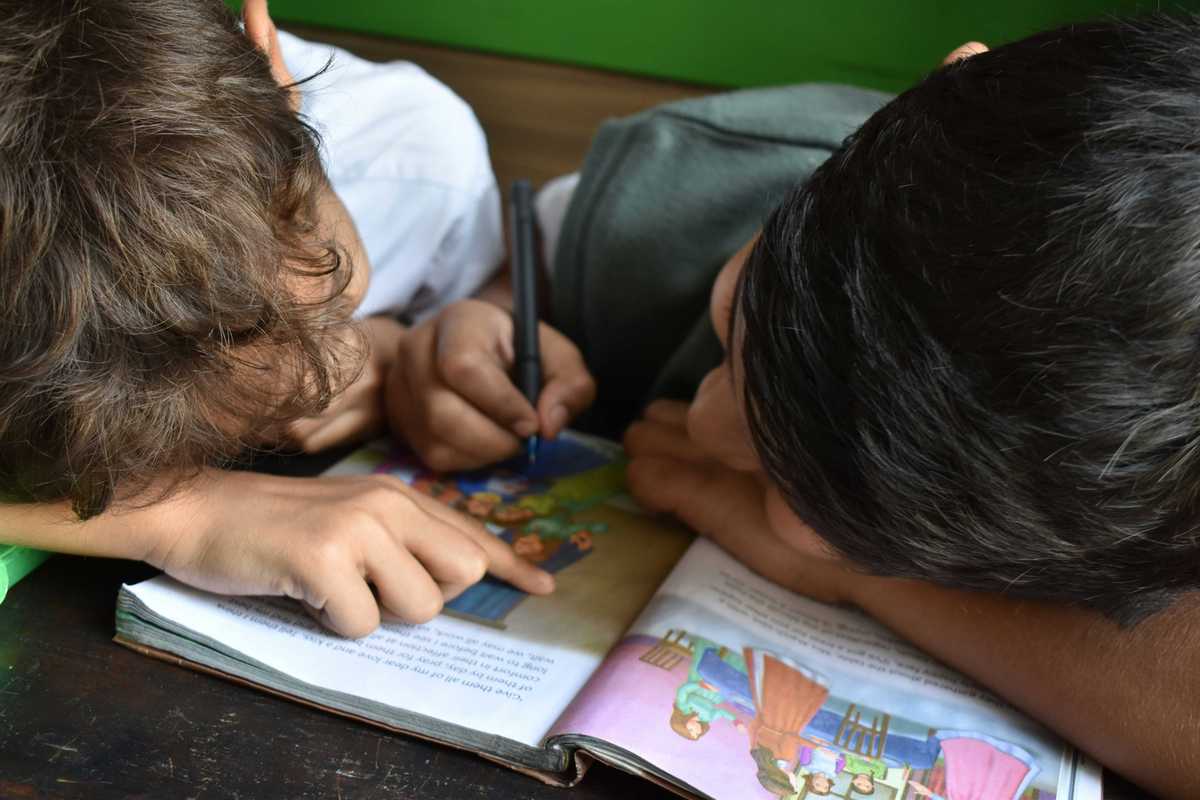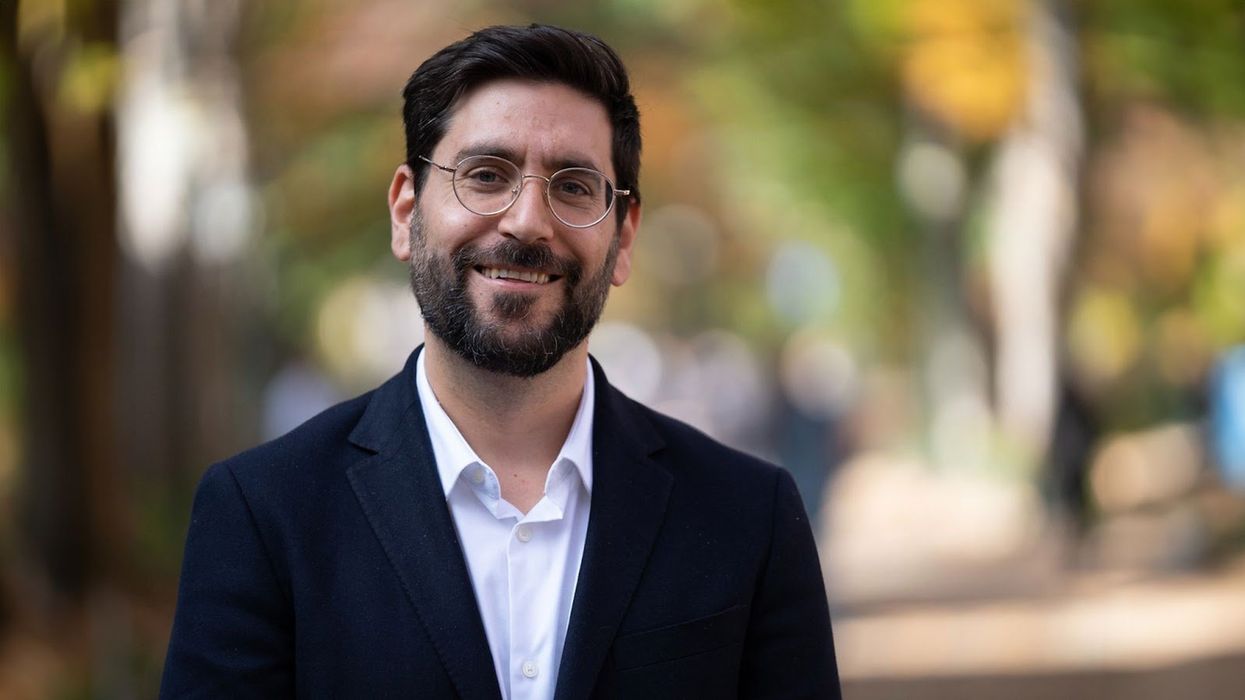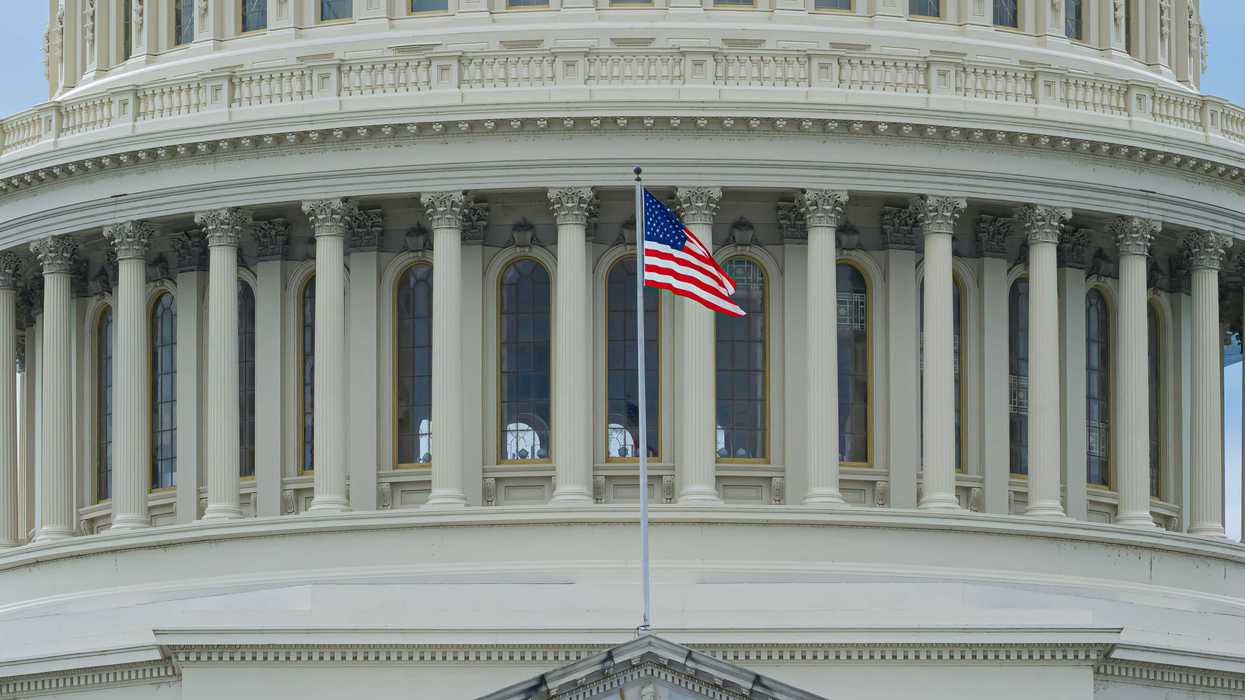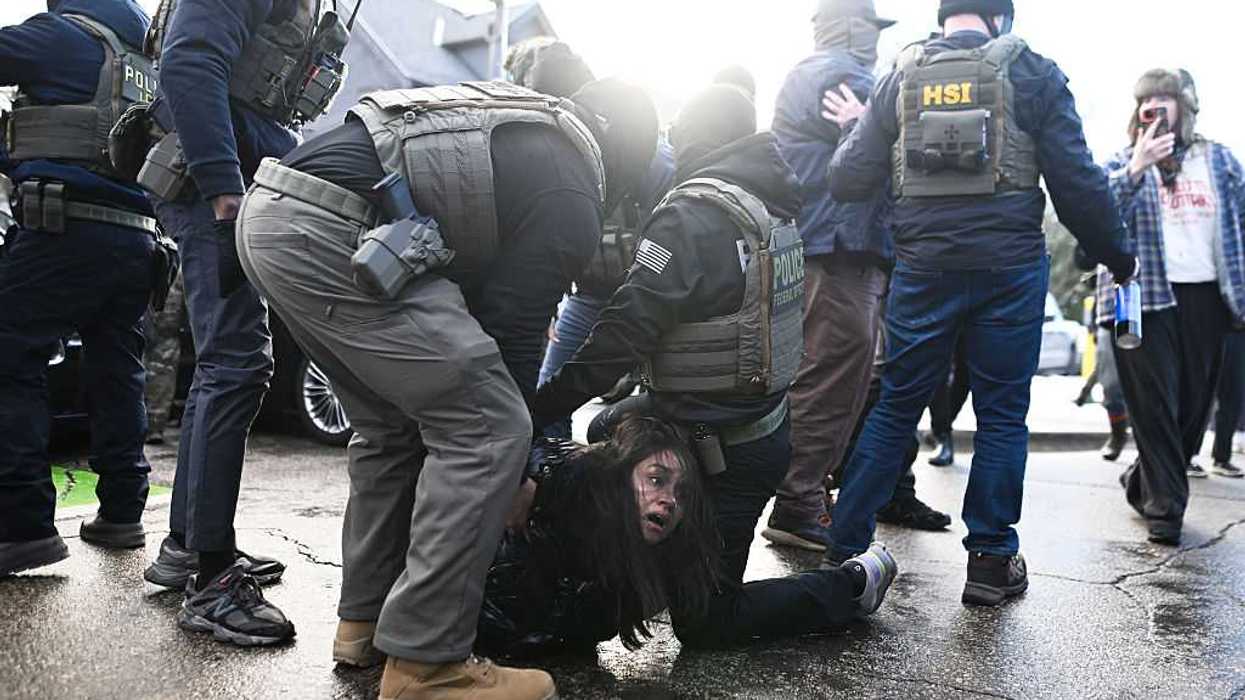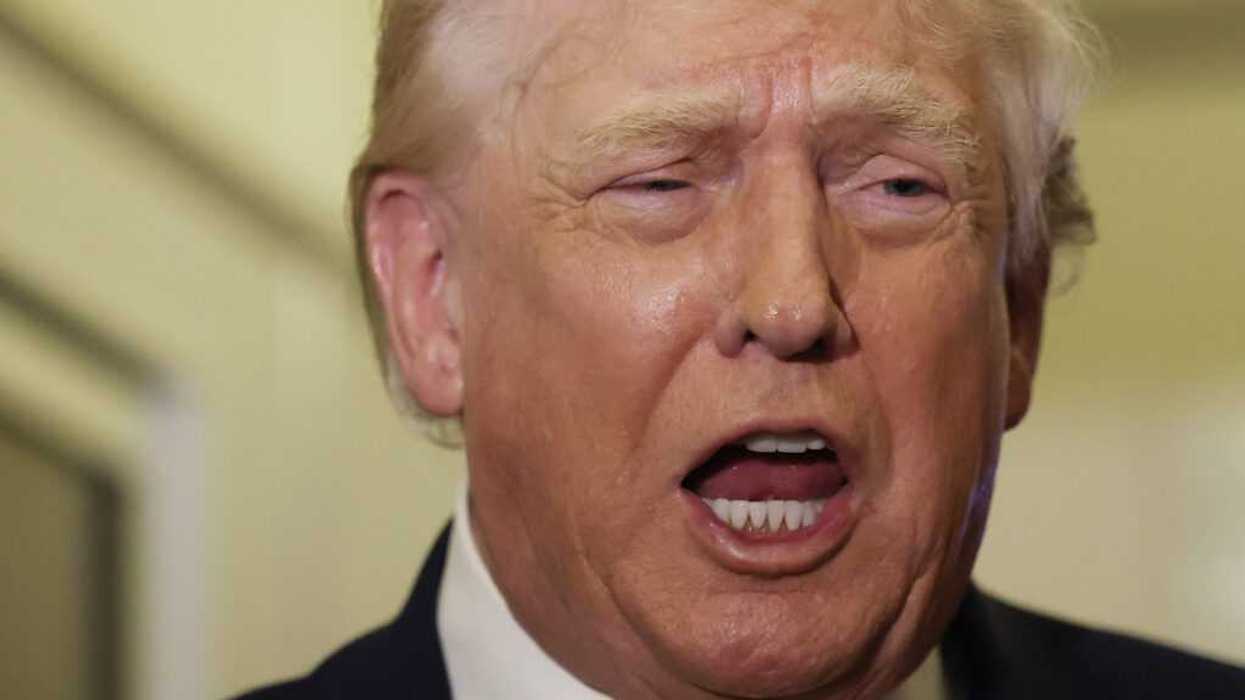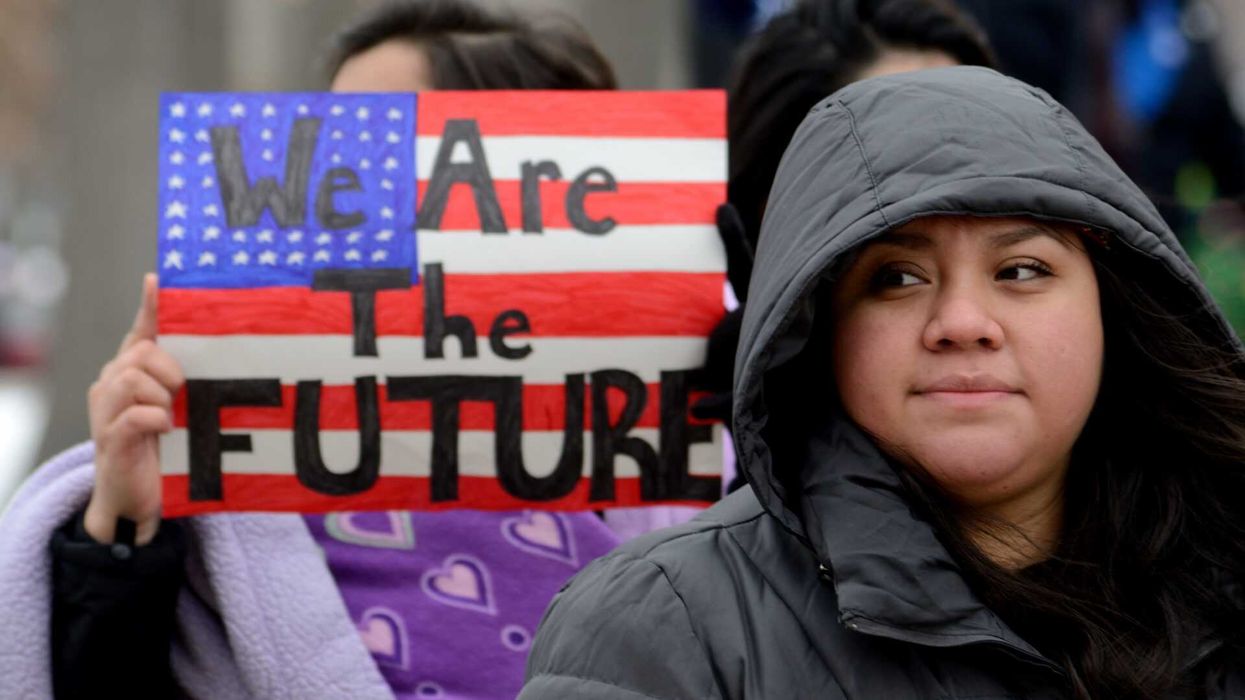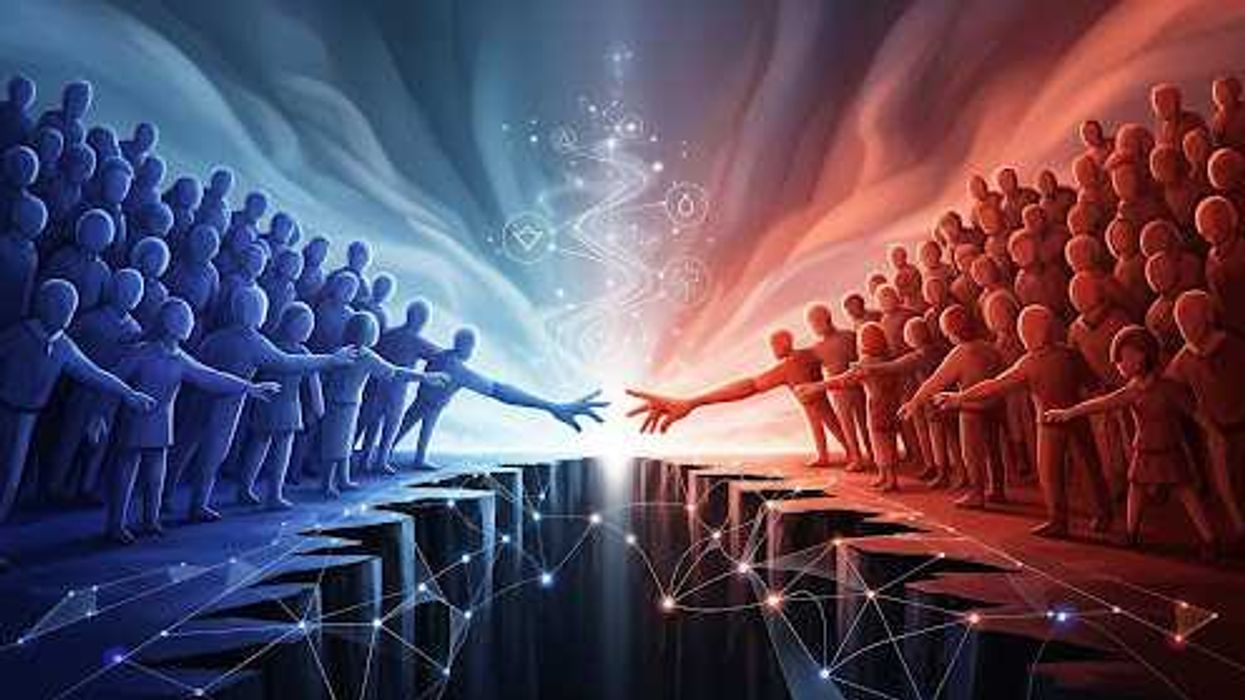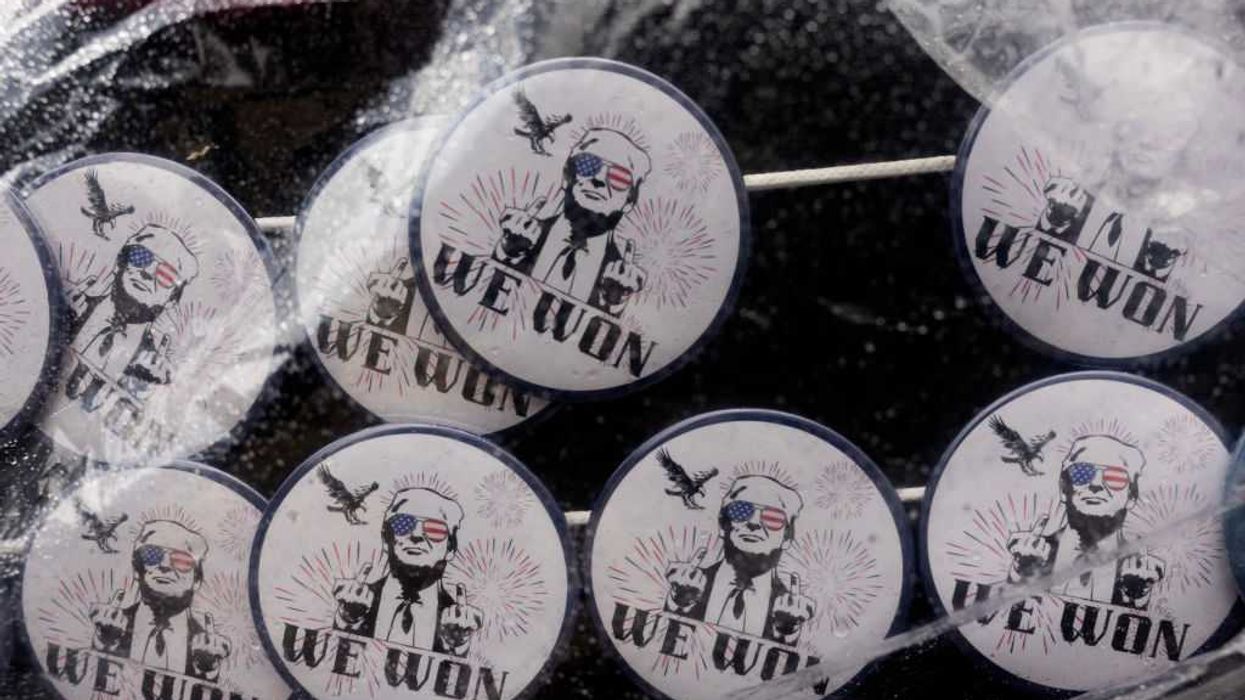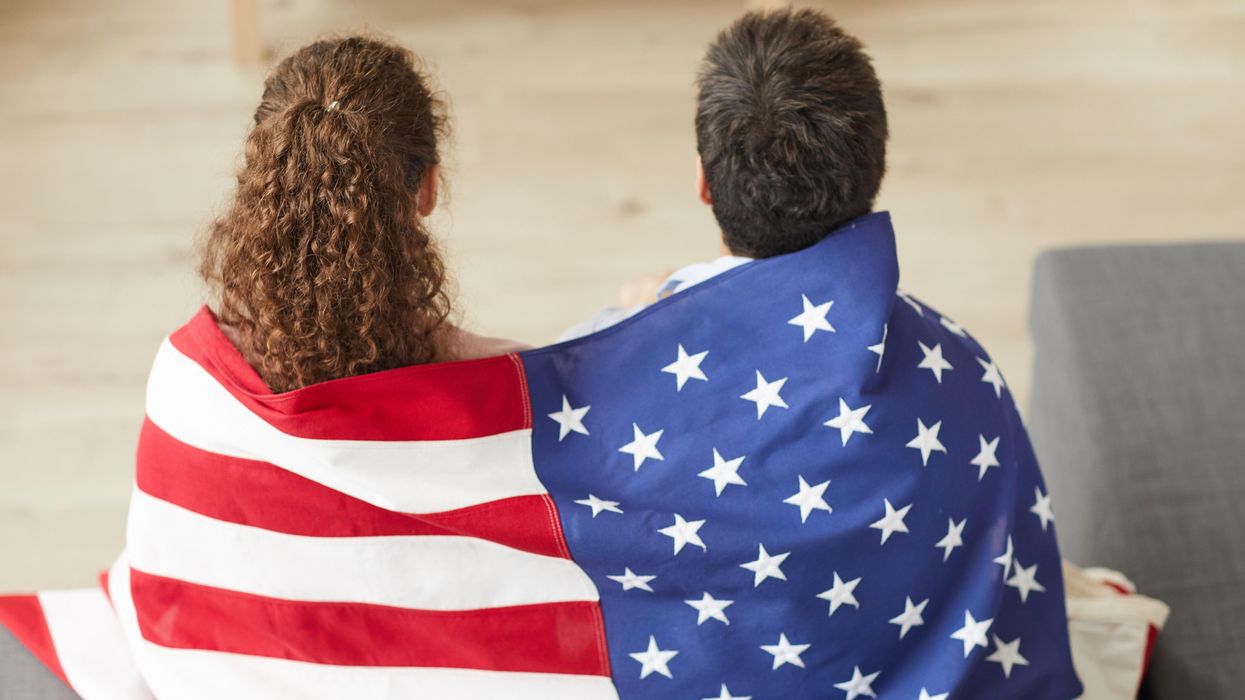Berman is a distinguished fellow of practice at The Harry Frank Guggenheim Foundation, co-editor of Vital City, and co-author of "Gradual: The Case for Incremental Change in a Radical Age." This is the fifth in a series of interviews titled "The Polarization Project."
On Jan. 6, 2021, the threat of political violence in the United States became an issue of urgent national concern. America has long had political extremists who have advocated for violent struggle of one kind or another — Weather Underground, Proud Boys, Oath Keepers and others. But the rioting on Capitol Hill seemed to suggest something else entirely — namely, that support for political violence had moved from the fringes and into the mainstream of American life.
According to Robert Pape of the Chicago Project on Security and Threats at the University of Chicago, more than half of the Jan. 6 insurrectionists were white-collar workers — business owners, architects, doctors and lawyers. “We need to really come to grips with the fact that what we saw on Jan. 6 is not simply the usual bad apples acting out yet again,” Pape says.
What do Americans really think about political violence? How widespread is support for the use of force to achieve political goals? It is difficult to wrap your arms around these kinds of questions. Different polls suggest different answers.
One of the researchers actively trying to come to grips with public support for political violence is Yphtach Lelkes, an associate professor of communication at the University of Pennsylvania and the co-director of the Polarization Research Lab. Among other projects, the lab conducts a series of weekly polls designed to take the pulse of Americans on a range of topics, including political violence.
I spoke with Lelkes about the relationship between political violence and polarization. This transcript of our conversation has been edited for length and clarity.
Greg Berman: The Polarization Research Lab argues that polarization threatens democracy. Walk me through the argument. Why do you believe that's the case?
Yphtach Lelkes: Polarization can be defined in a few different ways, but let's talk about it in terms of affective polarization, which is what we've mostly focused on at the lab. Affective polarization is essentially antipathy towards the other side. This threatens democracy in a few ways. One, if you dislike or fear the other side, you are more likely to let your side get away with things it otherwise wouldn't have. For instance, if someone on your side is corrupt or violates some democratic norm, you will let that slide because the alternative is that the other side gets in power, and the other side getting in power in your mind is a worse outcome than any bad behavior on your own side. So there's an accountability issue.
Another issue related to affective polarization is that you are more likely to elect extremists if you are polarized. And with extremism comes all sorts of dangerous policies that potentially abrogate the rights of other people. Also, if you are polarized, you're engaging with information in ways that don't live up to the requirements of democracy. We are supposed to consume information in an unbiased way and try to move towards some sort of semblance of reality and truth. When you're polarized, you may selectively expose yourself to certain information and ignore other information. So the marketplace of ideas stops working when people are polarized.
GB: Morris Fiorina at Stanford argues that most Americans are not ideologically polarized and that the polarization problem is primarily among political elites. Do you think that analysis is wrong?
YL: There are lots of different ways we can define polarization. He takes one definition, which is: Have people moved further to the extremes? Meaning that there's more people lumped far left and far right. I think it is an empirical fact that that has not happened. People have not moved to the extremes. But that's not the only way to define polarization, and it's not necessarily clear to me that movement towards the extremes is the most dangerous form of polarization. At the Polarization Research Lab, we tend to define polarization in terms of affective polarization, which is partisans disliking one another a lot more. This moves the conversation from the policy realm to the psychological realm. And with that comes all sorts of outcomes that may be potentially worse in terms of how you treat others and who you elect.
If you follow Morris Fiorina, you've probably also run into Alan Abramowitz’s work. Abramowitz talks about the increasing alignment of party and ideology. So if you ask Abramowitz, partisan sorting is also polarization. And that is certainly happening. Democrats now hold consistently liberal positions, and Republicans hold consistently conservative positions. And that's a problem because democracy relies on finding common ground and creating coalitions to pass bills. When there is a flattening of conflict, there's no room for compromise. When everyone on your side believes one thing and everyone on the other side believes the other thing, you can no longer build coalitions, and democracy doesn't work very well.
GB: Looking at the Polarization Research Lab’s weekly surveys, one finds very, very low levels of public support for political violence. You’re documenting 98 percent, 99 percent disapproval of assault and vandalism and murder. That seems like as good as one could hope to get. I mean, if I polled people on the question of whether ice cream was a delicious frozen treat, I’m not sure I’d get 99 percent approval of that.
YL: We don't want to seem Pollyanna-ish, but in the polarization world, we are more on that end of the spectrum compared to researchers who have their hair on fire. We argue that although Americans are effectively polarized, they are overwhelmingly democratic in terms of the policies they support and in their disavowal of violence. We think that is generally a good news story.
At the Polarization Research Lab, our mentality is essentially that the problem comes from the top. The fish rots from the head. The anti-democratic stuff we see emerging is coming from entrepreneurial elites who have some incentive in stoking this stuff. For example, there's a huge disconnect between the support for January 6th among elites and the lack of support for violence among the mass public. This seems to indicate that the public is not serving as a check on political elites. That’s another polarization problem. Elites can currently push policies that they want to without fear of being punished in the election.
GB: How do you conceive of the relationship between polarization and political violence? Aren't there places that have pretty spirited partisanship but don't feel like they're on the brink of civil war?
YL: Sure. I think the conventional wisdom in political science is that parties and partisanship are good. Right now, the state of America is that we have strong partisanship but weak parties. When parties are strong, they work as a filtering mechanism. They can vet candidates. They can move money around. They can organize coalitions.
In America, we have strong partisanship where people will always vote for their political party no matter what, yet there’s weak parties. This means candidates can do whatever they want to. An outside candidate like Donald Trump can come in and take over the party because there's no mechanism in place to control the candidates.
Partisanship is not necessarily synonymous with violence. It may even be negatively correlated with violence—generally you find that the people who are the most politically engaged, the strongest partisans, are also the ones who are least likely to support political violence. The people who tend to support political violence are anti-establishment people, people who are less engaged in politics, people who hate the other side more than they like their own side.
GB: It is hard to have this conversation without talking about Donald Trump. Some people say Trump is more a symptom than a cause. And other people say that Trump is a unique danger and is guilty of stochastic terrorism. Given what you've said about the importance of leadership, what role do you think Trump plays in our current polarization moment?
YL: I think the groundwork for someone like Trump was laid many years ago. So he is a symptom, but he is also a cause in that he foments anti-democratic attitudes. People tend to follow political elites. Trump has made a bad situation worse. Candidates, especially on the right, saw Trump’s behavior, and they started mimicking it. Trump affected how people talk to one another. He affected the tone. He affected how Democrats and Republicans perceive each other. And he still dominates media coverage.
GB: There is a narrative that says the Democrats are a multi-cultural, multi-ethnic coalition and the Republicans are the party of White America. But one of the things that has been confounding in recent months, to me at least, is the polling that suggests that there has been significant movement towards Trump among Black voters, Hispanic voters, and potentially Asian American voters, too. I'm wondering how you read that phenomenon.
YL: I'm a little bit hesitant to read too much into new polling data because I haven't been following it that much. I'm also a little bit skeptical. I'm not sure how much to read into it. I think the standard answer you'll get from people is that the left has turned off certain voting blocs who hold more conservative positions on social issues. Hispanics, African Americans, and Asians to a certain degree are not completely in line with the progressive policy agenda. So to the extent that they are moving toward the Republicans, I would probably surmise that it is partially due to their perception of what the left's policy agenda is.
GB: Y ou have looked into media bias in the past. What did you find when you tracked the politics of CNN, MSNBC and Fox over time?
YL: The data we collected was from 2010 to 2020 or so. And what we see is what you would expect, where Fox News is to the right and MSNBC and CNN are to the left. Up until Trump, the trends tended to be fairly highly correlated, meaning that when Fox News moved to the right, CNN also moved to the right. So it seemed like the media was following the national mood.
When Trump got elected, we see this rapid polarization where the channels move into their camps. Fox News became far more right wing and CNN became far more left wing and MSNBC became far more left wing. They stopped really being correlated with one another. So the channels now seem less focused on maximizing their audience and more interested in appealing to a niche audience.
We also find that there's a lot of difference within the day’s programming. So in the morning and the afternoon, when you have hard news, you see that all the channels are fairly centrist. But in the evening during prime time, that’s when you get Tucker Carlson and Rachel Maddow and things become pretty left or right wing.
GB: Talk to me about the role that you think social media plays in all of this. You've written that access to broadband increases consumption of partisan media and increases partisan hostility. More recently, Andy Guess at Princeton documented that reducing exposure to content shared by those who agree with you politically doesn't change political attitudes. Intuitively, it seems to me like social media is a big part of the problem, but I'm having a hard time finding research that I find persuasive or conclusive about it.
YL: I think it's very much an open question. I'm not convinced that we are looking at it through the right lens. A lot of research these days is looking at changing individual pieces of content. I think that is a drop in the bucket. People consume a lot of information from all over the place. I'm not sure the ten minutes or twenty minutes a day they spend on Facebook will have a particularly substantial effect.
I'm not sure we even have the methodology to think about social media as a giant system of information. You can tweak a button here and tweak a dial there, and it may or may not have an effect on the individual. But that seems a little bit too narrow to really capture the effect of social media per se. But what if we take people off of Twitter, Facebook, etc., and really change their information diet? Would we find an effect there? There is a recent study where they asked people to turn off Facebook. That decreased polarization.
I think that the information we see matters, but I'm not sure that changing individual pieces of information matters all that much. The people who are engaged on social media are not representative of the public. They tend to be the most extreme. The algorithms work by amplifying information that gets the most engagement, and negative, vitriolic content gets more engagement. So all of this produces, as Chris Bail calls it, a distorted prism into what other people think. And we rely on public opinion for our own opinions. On a lot of issues, we don't know what position to hold, so we look at what everyone else is thinking to figure out our opinion.
We rely on this perceived opinion climate to gauge what other people think and that affects what we think. I think you see that clearly now with the Israel-Palestine stuff. If you talk to people who are very online, they'll see the conversation on Twitter as being very firmly anti-Israel. But the truth is that the American public is generally quite pro-Israel. But if you talk to Jewish people who are very online, this perception that the world is very anti-Israel is really framing how they are thinking about their place in the world and their attitude towards the Democratic Party.
GB: The University of Pennsylvania, where you teach, has been on the front lines of the American fallout from the Israeli-Palestinian conflict. What’s your take on what’s been going on on campus in recent weeks?
YL: I think my perspective is a little bit skewed. I'm on sabbatical now, so I don't come to the campus that much. But there is an obvious disconnect between the story that is being told about UPenn being a place that is terrible for Jewish people and the reality, which is that it's a very safe environment that has had sporadic incidents. The media is incentivized to talk about outlier events. So that means that we focus on some naive 19-year-old who says something inflammatory, rather than the fact that Penn remains a very quiet campus.
There's clear splintering of the Democratic coalition on this issue right now which has some interesting potential implications for polarization. If we define polarization as the sorting of identities and ideology where the Democrats all hold liberal positions, that falls apart when Jewish people start looking around and saying, "Well, maybe I don't identify as strongly with the Democratic Party because of how I perceive the Democratic base to think about Israel." This might have downstream effects. A well-known finding in political science is essentially that when you adopt an identity, you then adopt the attitudes that go along with that identity. You saw this in the sixties when southern Democrats switched parties. They had been liberal economically, but after they joined the Republican Party, they started adopting more conservative positions. So there could be interesting feedback effects on sorting and ultimately polarization.
GB: It would be ironic indeed if the Israel-Palestine conflict ended up reducing polarization in the United States.
YL: To be honest, my sense is that Americans will probably stop caring about the issue pretty soon. Everyone switched their Facebook photo for Ukraine for a month and now you don't hear anything about it.
GB: In “The Identity Trap,” Yascha Mounk argues that in recent years, colleges have, instead of promoting universalist humanistic values, actively encouraged students to see the world in terms of simplistic binaries—oppressor/oppressed, settler/colonized, etc. Do you think that's true?
YL: This is something I don't know too much about. The only thing I can really say is that the vast majority of academics are not working in that framework. We're just trying to get students to understand basic science and basic math. I'm just trying to educate people about basic social science. I think that is very much the case for most social scientists. Most math professors just want their students to understand calculus. Most political science professors just want their students to understand how the American government works. So I don't really have a good sense of what percentage of classes talk about the kinds of things that Yascha Mounk talks about.
GB: In a piece you wrote for The Hill last year, you said that the midterm election results made you hopeful. Are you still hopeful?
YL: I think so, yeah. I don't have that sense of lingering dread that the next election will be the last one. The reason we were hopeful in 2022 is that the election deniers overwhelmingly lost. There's still enough independents out there that are turned off by the anti-democratic rhetoric and vitriol. And when politicians see that they don't have people on their side to win, they will have to tone it down to win an election. I think that ultimately candidates are self-interested. They say stuff to get elected, that's their goal. And if it doesn't get them elected, then they won't say it.
GB: If the goal is to address affective polarization, support democracy, and reduce the chances of political violence, what kinds of investments should we be making in the days ahead?
YL: This is something we think about a lot in the Polarization Research Lab. Let me start by saying what I don't think works very well, which are these exercises where you bring people into a room together to bridge differences. I think a lot of foundations are spending a lot of money on that right now. I think the problem with that stuff is that the effects are very short lasting. As soon as people hear Donald Trump again, they just revert to their prior positions.
In my mind, what we focus on in the Polarization Lab is changing elite behavior. We are launching soon a tracker where we've ingested political rhetoric of basically all federal politicians, and we're hoping to extend it to state-level politicians as well. Every social media post they make, every news release, every cable news appearance, we input that data, and then we categorize it in terms of: Is it talking about policy? Is it vitriolic? Is it working towards the good of the country? We're not taking a political stance in terms of left versus right, but we're saying that politicians should represent their constituents and think about policy. Our hope with this platform is that voters will use it to choose people who are helping, not hurting the system. We are also hoping that donors will use this platform and funnel money away from people who aren't talking about policy.
The ultimate goal is to change elite behavior. I think polarization has occurred because of structural issues. And those structural issues can be things like getting attention on social media or things like how the electoral system works. And so I think the right solutions to polarization have to be focused on changing political elites because, like I said, things run off from the top.
GB: Are there particular structural reforms that people have mooted to the political system that you think have real potential to make a difference?
YL: You have to balance what will work really well with what will actually ever happen. And so I think abolishing the electoral college, adopting proportional representation, I think those things would probably work. But I also think those things are probably not going to happen. I'm very skeptical of things like ranked-choice voting. The evidence just really isn't there, but there's a lot of money being poured into that.
I think other things that are potentially doable include working with social media companies to not reward vitriol on their platforms. I think there are also possibilities in bringing people together, as long as it’s not a one-time thing and not just a neat experiment that some researcher wrote up for a journal. It needs to be a lasting thing. When people join a union, they become less polarized because they're interacting with people with views all across the map. Ideas like mandatory civic service I think may work to make people more open-minded about others.
GB: On that theme, I am attracted to the idea, echoing Robert Putnam, that part of what we're experiencing has been a gradual erosion of American civic organizations, unions, churches … the kinds of institutions that used to bring people together across class and ideological divides. Does that argument have any appeal to you?
YL: It does seem appealing. We need cross-cutting experiences and we need exposure to cross-cutting information. Unfortunately, we don't get a lot of cross-cutting exposure because of the increasing homogenization, ideologically speaking, of where we live and where we work. And social media and the Internet in general have contributed to this reality where we can avoid hearing from other voices. Or when we do hear other voices, as we do now on social media, the voices we hear tend to be the most insane ones. So I think there's something inherently appealing about thinking about how we can reduce homogeneity and incentivize pluralism.
This article originally appeared on HFG.org and has been republished with permission.




